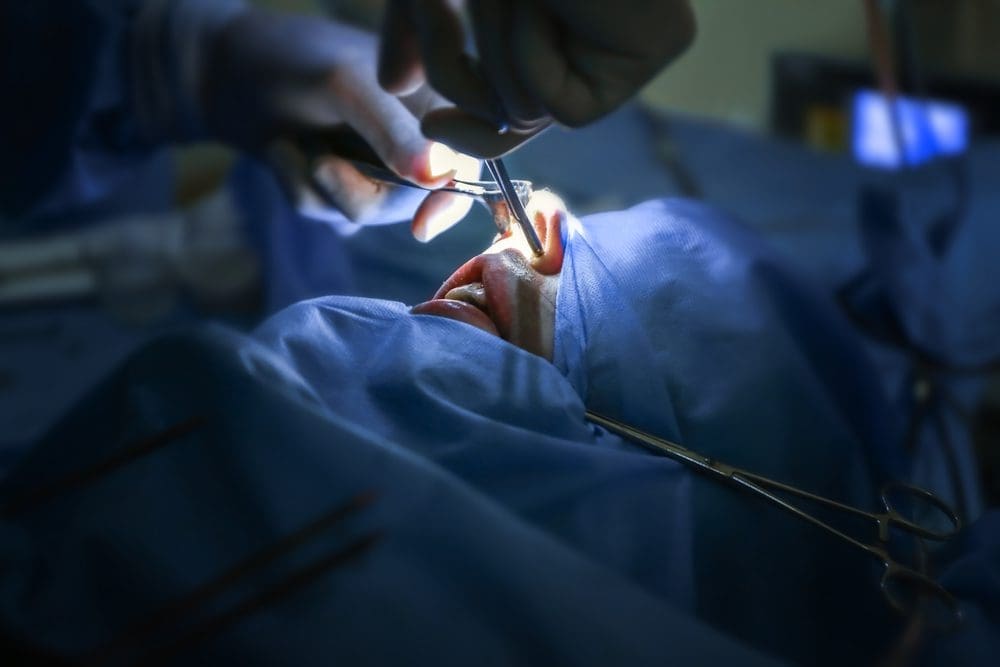If you find that you’re dissatisfied with your new appearance after receiving a rhinoplasty surgery, you might want to consider a revision rhinoplasty. When you’re considering this treatment, keep in mind that it’s a more difficult one to perform than a standard rhinoplasty. The presence of scar tissue makes it harder for surgeons to complete the revision rhinoplasty, which is why it’s important that you have this treatment performed by a surgeon you can trust.
What Is a Revision Rhinoplasty?
A standard rhinoplasty is a type of plastic surgery procedure that is designed to reshape your nose. The reshaping of your nose can include everything from straightening the nose to adding more volume in the bridge of your nose. It’s also possible to have your nostrils widened. A revision rhinoplasty is a procedure that is used to treat issues that you may have had with the initial treatment. If you were dissatisfied with the initial changes or have received a botched treatment, you may want to schedule a revision rhinoplasty. It’s also possible for this treatment to remove scar tissue that has formed following the completion of the first rhinoplasty.

When you obtain any type of plastic surgery, incisions will be made in order to provide you with the changes you’re seeking. Once the work has been finished, the incisions will be closed and the healing process will begin. Even if you treat the incision site with as much care as you’re supposed to, it’s possible for the healing process to progress poorly, which means that severe scar tissue can develop. This scar tissue can mar what was otherwise a successful treatment. If you obtain the services of an experienced surgeon, the poor scarring along the incisions can be corrected with a revision rhinoplasty.
Why Scar Tissue Can Be a Problem During a Revision Rhinoplasty
While scar tissue can be removed during a revision rhinoplasty, the problem is a difficult one to remedy. The scar tissue will form along the skin and cartilage in your nose. Since the nose is small and delicate, removing this scar tissue will take at least several hours to complete. Removing scar tissue is so difficult because it’s possible to adversely affect the supply of blood to your nose. The focus by the surgeon during this treatment will be to specifically remove any fat, tissue, or scarring that’s the cause of your dissatisfaction with the original procedure.
Scar tissue is natural with a rhinoplasty and will grow back when you obtain a revision procedure. However, the scarring should be greatly reduced during the treatment. Certain precautions will likely be taken to ensure that only a small amount of scar tissue grows back after the completion of the revision rhinoplasty. Your surgeon may suggest that you wear a type of nasal tape for a few weeks to keep additional scarring at a minimum. Since a revision rhinoplasty is a very complicated procedure, you will need to speak with your surgeon to determine whether or not this treatment is right for you.
The procedure should take anywhere from 4-6 hours to complete. Once it is finished, your recovery time will last longer than it did with the first rhinoplasty. If any additional revision rhinoplasty procedures are necessary, the treatments will continue to become more complicated and the recovery process more problematic. Although the total recovery time depends on your overall health, it should take around 6-12 months for you to heal completely. With thick scar tissue, recovery from the treatment can take as long as two years. Due to the complexities of a revision rhinoplasty, it’s essential that you follow your surgeon’s instructions completely.
When to Obtain a Revision Rhinoplasty for Scar Tissue
If you find that you are unhappy with your initial rhinoplasty or feel as though too much scar tissue has formed, it may be time to obtain a revision treatment. However, the initial procedure must heal fully before you consider the second treatment. It’s generally recommended that you wait a period of one year before scheduling a revision rhinoplasty. However, only your surgeon will be able to provide you with a definitive answer on when the best time is. If your nose still feels tender to the touch, you should likely wait longer to schedule this procedure.
The risks associated with a standard rhinoplasty occur on a more frequent basis with a revision rhinoplasty. Difficulties with breathing and skin discoloration are possible as are swelling problems. You may experience changes in your skin sensation that result in acute pain or numbness. It’s also possible that the incision site could become affected if the recovery doesn’t go well. These risks should all be discussed with your surgeon.
What to Inquire About During Consultation With Surgeon
While scar tissue is very difficult to deal with, there are a number of surgeons who are trained and experienced in handling this tissue during revision rhinoplasty procedures. During your search for a surgeon to perform the revision, make sure that you obtain consultations before scheduling the surgery. During this consultation, ask any questions that you may have about the procedure and about the surgeon who is performing it.
These questions will put your mind at ease and will allow you to identify the best surgeon for the job. Let the surgeon know what your goals are for the procedure and take pictures of your preferred nose appearance if necessary. Ask the surgeon about the number of revision rhinoplasty procedures that they’ve performed. You should also inquire about the risks associated with the treatment so that you can take any necessary precautions.
Interesting facts you should know about hy
Dr. Frankel is a surgeon who specializes in nasal surgery as well as a variety of facial surgeries. He has received dual board certifications and completed his residency program at the prestigious University of Illinois. A primary focus in the work he provides is on rhinoplasty and revision rhinoplasty procedures in Beverly Hills.





